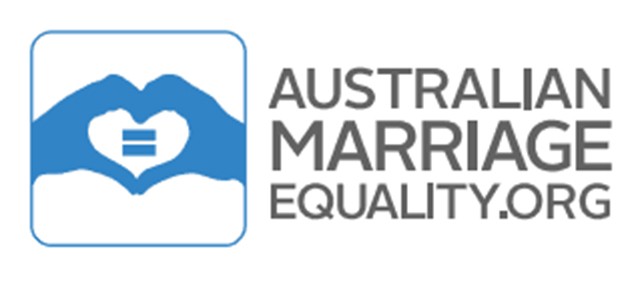Advocates for marriage equality and for transgender and intersex people have begun a dialogue about ensuring marriage equality is inclusive of all transgender and intersex Australians.
An initial meeting, facilitated by the Human Rights Law Centre, discussed how to ensure state and federal marriage equality legislation is inclusive of transgender and intersex people, and how Australian Marriage Equality can better engage with the transgender and intersex communities.
AME national director, Rodney Croome, said,
“We value dialogue with representatives of the transgender and intersex communities because the marriage equality campaign must be inclusive of all loving committed couples regardless of sex, sexual orientation, gender identity or intersex status.”
“Ultimately, equality means equality for all.”
Anna Brown, from the Human Rights Law Centre said,
“While some of the legal and policy issues are complex and require further exploration, it’s incredibly important and welcome that this conversation is happening. Marriage highlights the more fundamental problem of lack of recognition before the law. It’s important that our legal systems accurately reflect and accommodate the reality of sex and gender diversity that exists in our society.”
Morgan Carpenter, President of the Organisation Intersex International (OII) Australia, said,
“Some intersex people are heterosexual and already married, but others are unable to marry – because of our intersex status or because of our partner’s status. We need and welcome moves to ensure that all of us can marry, and these discussions with Australian Marriage Equality have helped to identify a way forward, together.”
Highlighting the progress achieved in New Zealand, Tony Briffa said,
“The current Marriage Act states marriage is between a man and a woman, but what about people like me who are born biologically not clearly male or female? Who can we marry? Being intersex didn’t stop me from being able to marry in New Zealand, and I hope my marriage will be recognised in Australia one day soon.”
The Executive Director of Transgender Victoria, Sally Goldner, said
“Achieving marriage equality at the federal level will end the horrible scenario that is ‘forced trans divorce.’ This is part of creating greater happiness for a greater range of loving couples. Having relevant groups co-operating more effectively is simply a practical step to achieving this better outcome as quickly as possible.”
According to Rebecca Reynolds, Executive Director of the National
LGBTI Health Alliance,
“Studies show that because of the enshrinement of marriage within legislation, marriage recognition improves the health and wellbeing of LGBTI people. At present, many intersex, trans and gender diverse Australians have experienced marriage discrimination. We hope that Australian marriage equality efforts will promote better health outcomes by ensuring that no Australian will be denied the opportunity to have their relationship properly recognised due to their intersex status or gender identity.”
For more information contact:
Rodney Croome 0409 010 668
Anna Brown 0422 235 522
Morgan Carpenter 0405 615 942
Sally Goldner 0407 946 242
Rebecca Reynolds 02 8568 1110
Author:Rodney Croome
Publication: AME Media Release
Date: 21 May 2014

